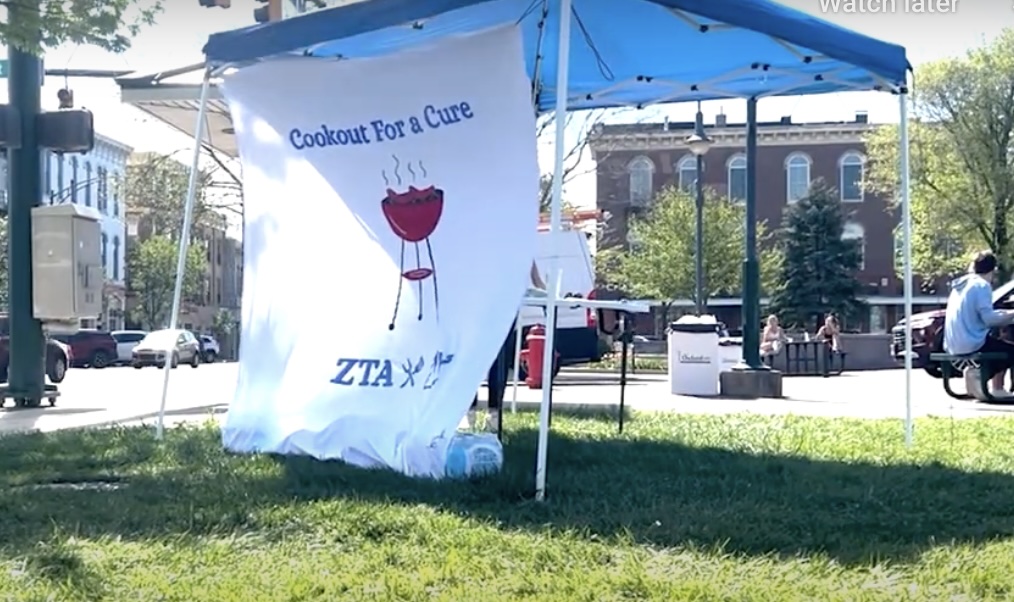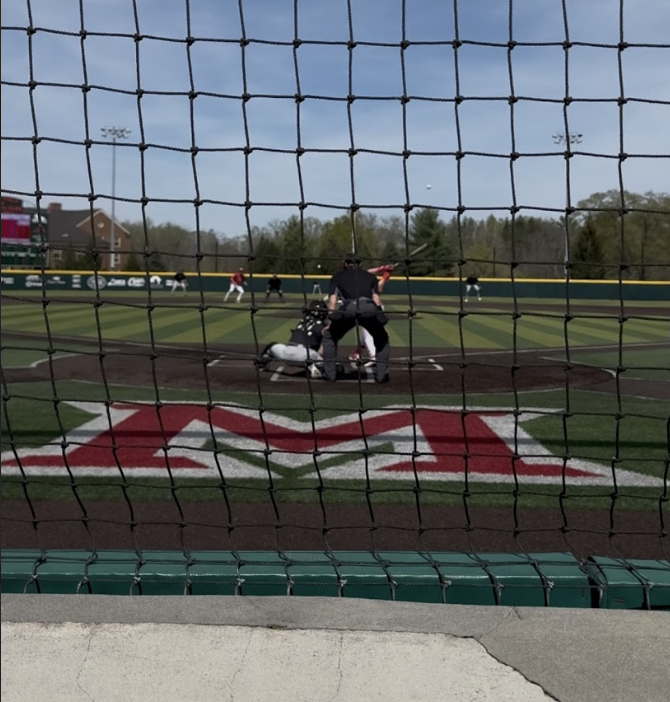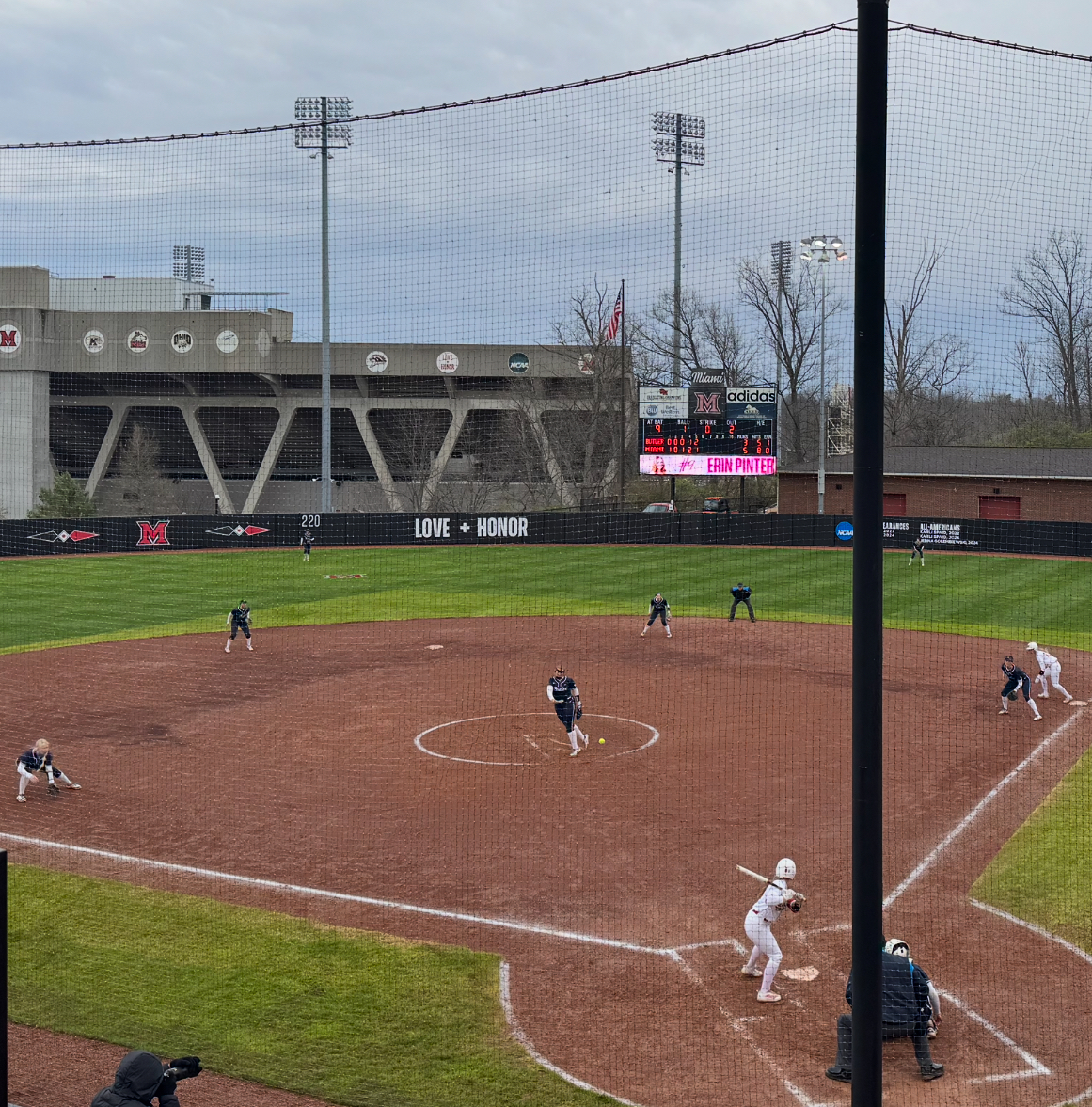Miami University is contributing to the global effort against COVID-19 with a research project that crosses departments, combining the expertise of faculty and students in the departments of chemistry and biochemistry and the center for analytics and data science (CADS).
The team is researching secondary infections common with COVID-19, that allow the production of beta-lactamase — a group of enzymes that destroy penicillin-like drugs — and contribute to antibiotic resistance. With compromised immune systems, patients who are COVID-19 positive are more susceptible to bacterial infections, like urinary tract infections or bacterial pneumonia, which can be fatal. The widespread use of antibiotics to treat these infections could accelerate the development of antibiotic resistance — the evolution of bacteria to become resistant to the drugs being used to treat infections.
Michael W. Crowder, chair of the department of chemistry and biochemistry, who will become associate provost and dean of Miami’s graduate school July 1, said he’s been leading research projects at Miami related to antibiotic resistance for about 25 years.
And while their projects started before the COVID-19 pandemic, it has brought new attention to their work.
“COVID is a very interesting virus because it affects people differently,” Crowder said. “The majority of people, when they get COVID, there’s no symptoms. And then there’s a smaller percentage where it looks like a normal virus… And then there’s another group of people where it’s devastating, it makes them sick and it attacks their heart and other organs in the body — their kidneys — and then their bodies start producing antibodies and the antibodies attack the body even worse… And when that happens those patients get put on ventilators … And they’re very susceptible to secondary infections. And it turns out, that one of the bacterial strains that seem to show up in these patients that are COVID-positive is called a.baumannii … Many of these strains of a.baumannii are known to produce these beta-lactamases that we’ve been studying for 25 years.”
Crowder said a grant proposal was submitted to NIH last week for a project that will test compounds and their ability to inhibit these beta-lactamase enzymes that can contribute to antibiotic resistance. He said the prototype for what they’re looking for is augmentin — a commonly prescribed antibiotic drug that includes clavulanic acid which inhibits certain lactamase enzymes, but not the beta-lactamases his lab has been studying. “Our goal would be to give our drug with amoxicillin or whatever penicillin-like drug there is,” Crowder said.
To identify compounds that could work, Crowder and his team of chemistry students have collaborated with faculty and students at Miami’s center for analytics and data science, who have used machine learning — the use of computers to narrow a chemical library of 40,000 possible compounds to 2,000 compounds showing the most promise to inhibit beta-lactamase.
Maria Weese, Richard. T. Farmer Assistant Professor of Analytics, and Waldyn Martinez, assistant professor of business analytics, have been faculty advisors and project leaders on the machine learning and data analysis side of the project.
“Machine learning is giving the ability to computers to be able to learn complex patterns from vast amounts of data,” Martinez said. “So, it’s just being able to get that needle-in-the haystack kind of idea from data using just computerized models.”

Weese and Martinez both emphasized that to analyze the 40,000 possible inhibitors in the chemical library, undergraduates led the charge writing the code and training the model. Weese said their team had thousands of bits of information on each compound being looked at and undergraduates worked diligently to create a model that could analyze the data, and to develop skills for communicating with experts in another field to design the appropriate model.
“These are thousands of lines of code, coded by undergrad students at a level that is up to experts’,” Martinez said.
Crowder said the ability to contribute in major research projects and directly participate is one of the main reasons STEM students go to Miami. “They want to be in the mix of making great discoveries,” Crowder said. “They don’t just want to be reading about them and washing glassware in somebody’s lab… They want to actually be sitting at the bench top collecting data.”
Aidan Sturgill, an undergraduate biochemistry major and rising sophomore at Miami, joined Crowder’s lab as a freshman after working on a project with the University of Kentucky on antibiotic resistance, while in high school. He said he’s applied his research experience in chemistry and a basic understanding of coding and machine learning to help serve as a liaison between Crowder’s group and the center for analytics and data science group, over remote video calls since the COVID-19 pandemic forced him to leave campus early.
Sturgill said he’s valued working directly on a project with global importance at Miami. “When we started, we had an idea that this could be a pretty widely applicable project,” Sturgill said. “But obviously, COVID wasn’t as prevalent then, but with that coming around, we were in a great position … Now we have this global example of something that our research could apply to. ‘Let’s see what we can do. Let’s see how we can help.’ ”
Crowder said there’s been a push to fund and accelerate projects that are relevant to COVID-19. “NIH (National Institutes of Health) and NSF (National Science Foundation) want results yesterday on anything COVID-related,” Crowder said.
According to data from the John Hopkins University of Medicine database, more than 118,000 people have died from COVID-19 in the U.S. as of June 18 — and more than 450,000 have died globally. The CDC has outlined measures to prevent getting sick, like social distancing and wearing facemasks in public, and it has indicated multiple high-risk groups who should take special precautions.








